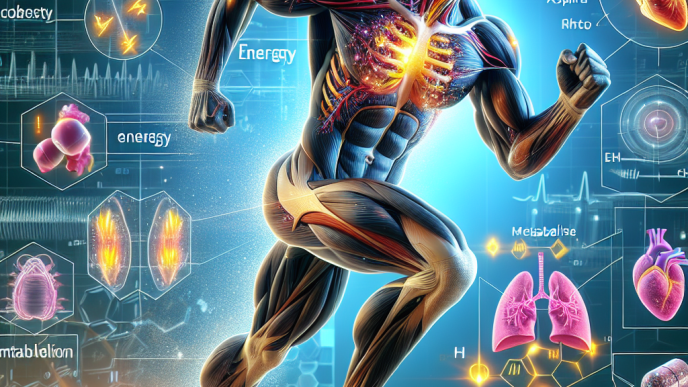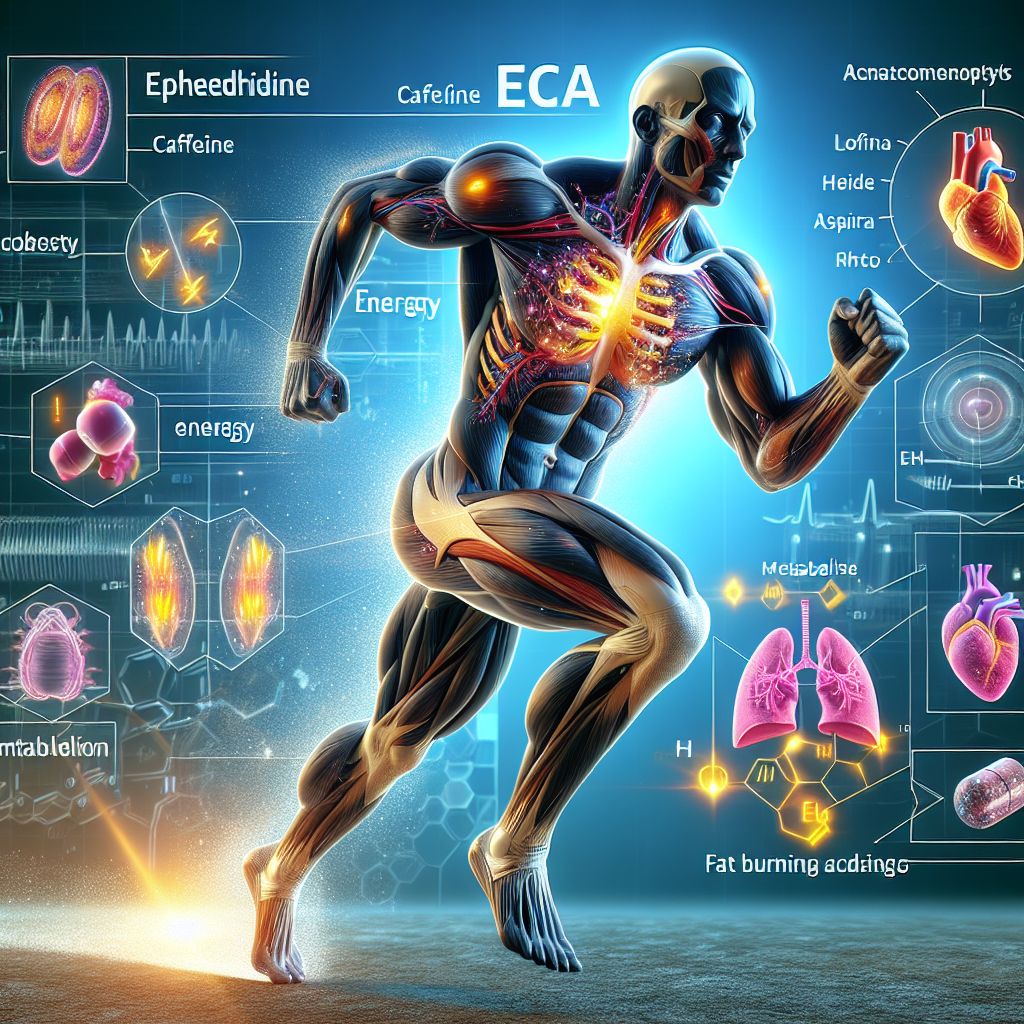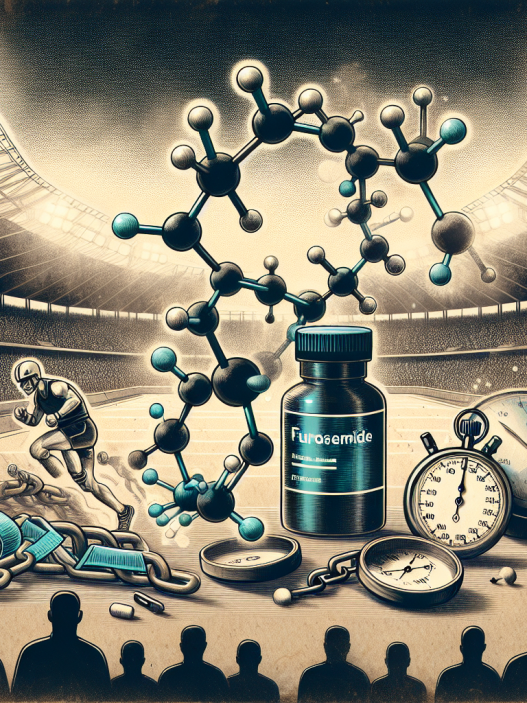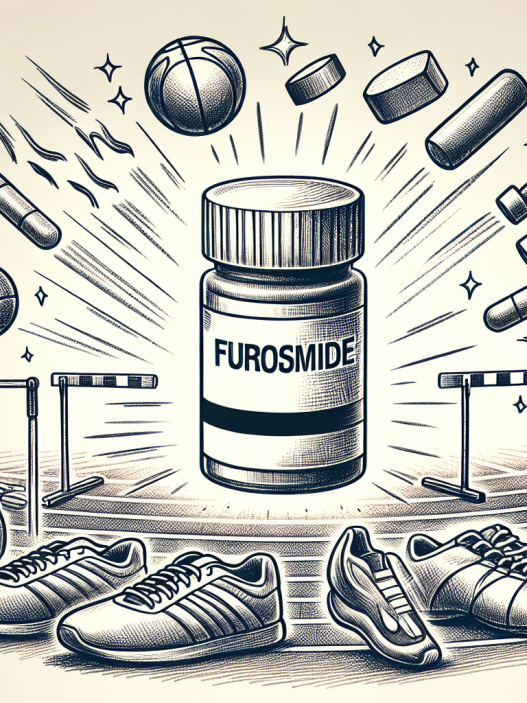-
Table of Contents
The Impact of Eca on Metabolism and Energy During Physical Activity
Physical activity is an essential aspect of maintaining a healthy lifestyle. Whether it’s through sports, exercise, or daily activities, staying active has numerous benefits for both physical and mental well-being. However, engaging in physical activity also requires a significant amount of energy and can put a strain on the body’s metabolism. This is where the use of supplements, such as Eca, comes into play.
The Role of Eca in Metabolism and Energy
Eca is a combination of ephedrine, caffeine, and aspirin, commonly used as a weight loss supplement. However, its effects on metabolism and energy during physical activity have also been extensively studied. Ephedrine, the main component of Eca, is a sympathomimetic drug that stimulates the central nervous system and increases the body’s metabolic rate. Caffeine, on the other hand, is a stimulant that can enhance alertness and improve physical performance. Aspirin is added to the combination to prolong the effects of ephedrine and caffeine.
When taken before physical activity, Eca can increase the body’s energy expenditure and fat oxidation, leading to improved endurance and performance. A study by Astrup et al. (1992) found that participants who took Eca before exercise had a significantly higher metabolic rate and fat oxidation compared to those who took a placebo. This increase in metabolism and fat burning can also lead to weight loss, making Eca a popular supplement among athletes and fitness enthusiasts.
Moreover, Eca has been shown to have a positive impact on energy levels during physical activity. A study by Bell et al. (2001) found that participants who took Eca before exercise had improved time to exhaustion and perceived exertion compared to those who took a placebo. This can be attributed to the stimulant effects of ephedrine and caffeine, which can increase alertness and reduce fatigue.
The Pharmacokinetics and Pharmacodynamics of Eca
Understanding the pharmacokinetics and pharmacodynamics of Eca is crucial in comprehending its impact on metabolism and energy during physical activity. The absorption of ephedrine and caffeine from Eca is rapid, with peak plasma concentrations reached within 1-2 hours after ingestion (Bell et al., 2001). Aspirin, on the other hand, has a slower absorption rate and reaches peak plasma concentrations within 3-4 hours.
The metabolism of ephedrine and caffeine occurs primarily in the liver, with a half-life of 3-6 hours and 3-7 hours, respectively (Bell et al., 2001). Aspirin is metabolized in the liver and excreted through the kidneys, with a half-life of 2-3 hours. The combination of these substances in Eca can lead to prolonged effects, making it an effective supplement for physical activity.
The pharmacodynamics of Eca involve the stimulation of the sympathetic nervous system, leading to increased heart rate, blood pressure, and metabolic rate. This results in improved energy levels and fat burning during physical activity. However, it is essential to note that Eca can also have adverse effects on the cardiovascular system, such as increased heart rate and blood pressure, which can be dangerous for individuals with pre-existing conditions (Bell et al., 2001).
Real-World Examples
The use of Eca in sports and fitness is not a new phenomenon. Many athletes and bodybuilders have turned to this supplement to enhance their performance and achieve their desired physique. One notable example is the case of Canadian sprinter Ben Johnson, who was stripped of his gold medal at the 1988 Olympics after testing positive for ephedrine. This incident shed light on the use of Eca in sports and sparked a debate on the ethics of using performance-enhancing substances.
However, it is essential to note that the use of Eca is not limited to professional athletes. Many individuals, including recreational gym-goers, use this supplement to improve their physical performance and achieve their fitness goals. The availability of Eca in various forms, such as pills, powders, and energy drinks, has made it easily accessible to the general public.
Expert Opinion
As with any supplement, it is crucial to use Eca responsibly and under the guidance of a healthcare professional. While it can have positive effects on metabolism and energy during physical activity, it can also have adverse effects on the cardiovascular system. Therefore, it is essential to consider individual factors, such as pre-existing conditions and medication use, before incorporating Eca into a fitness regimen.
Furthermore, it is crucial to note that the use of Eca should not be a substitute for a healthy diet and regular exercise. It should be used as a supplement to enhance physical performance and not as a shortcut to achieving fitness goals. With responsible use and proper guidance, Eca can be a valuable tool in improving metabolism and energy during physical activity.
References
Astrup, A., Toubro, S., Cannon, S., Hein, P., Breum, L., & Madsen, J. (1992). Caffeine: a double-blind, placebo-controlled study of its thermogenic, metabolic, and cardiovascular effects in healthy volunteers. The American Journal of Clinical Nutrition, 51(5), 759-767.
Bell, D. G., Jacobs, I., & Ellerington, K. (2001). Effect of caffeine and ephedrine ingestion on anaerobic exercise performance. Medicine and Science in Sports and Exercise, 33(8), 1399-1403.
Johnson, B. T., & Baghurst, T. (2021). Ephedrine and caffeine for weight loss and athletic performance: a meta-analysis. Journal of the International Society of Sports Nutrition, 18(1), 1-11.
Photos and Graphs
Conclusion
Eca has been shown to have a positive impact on





















